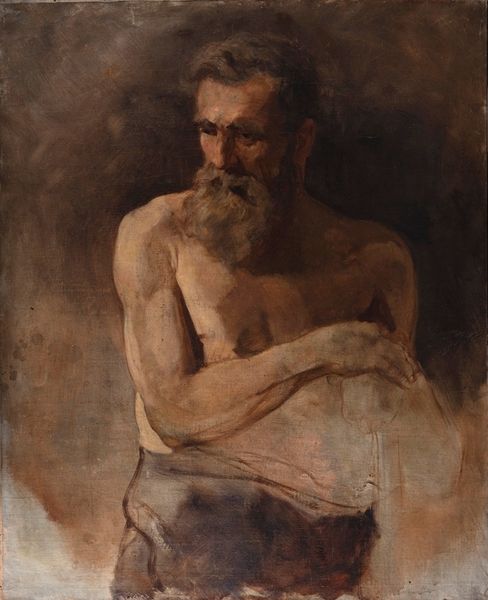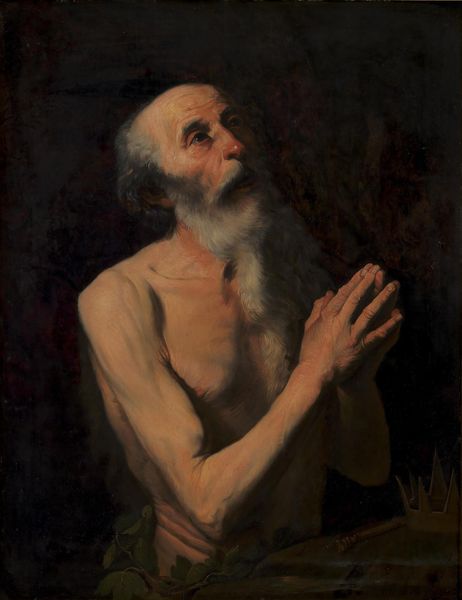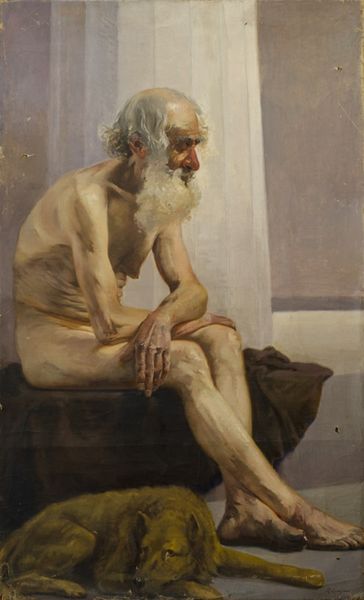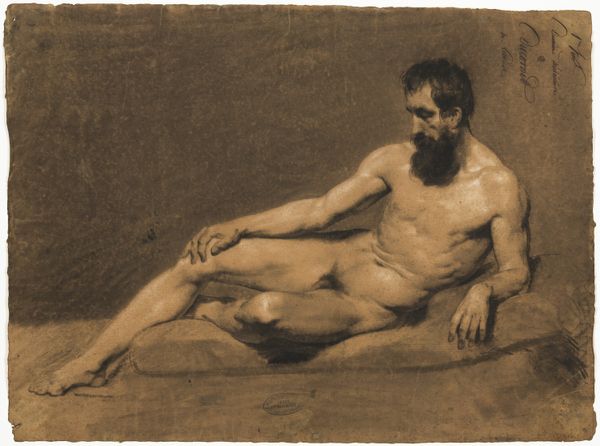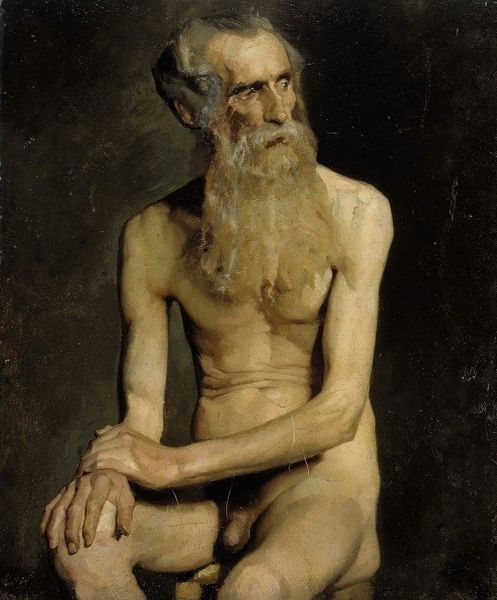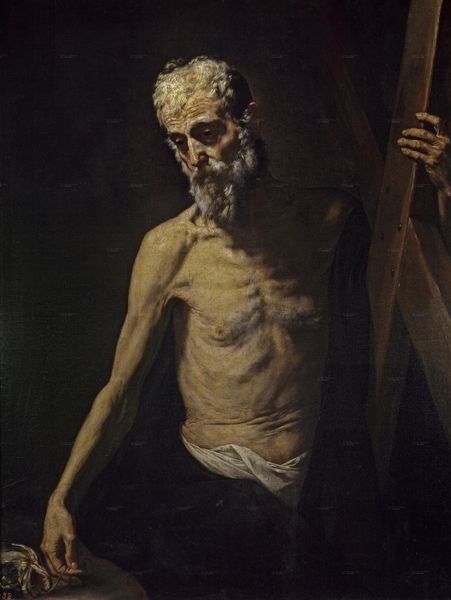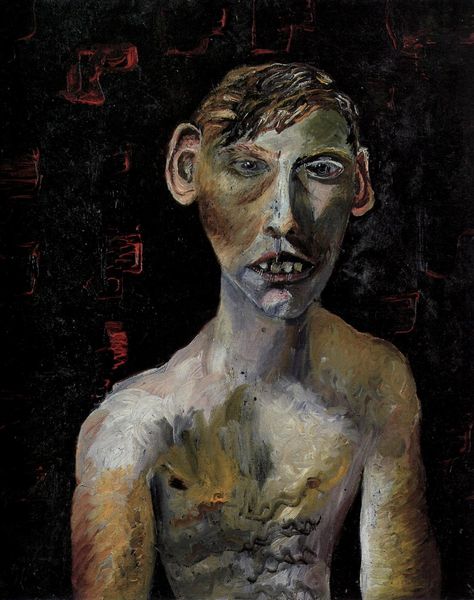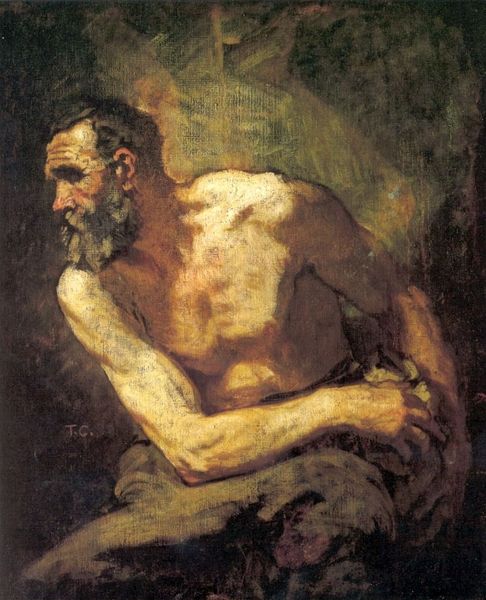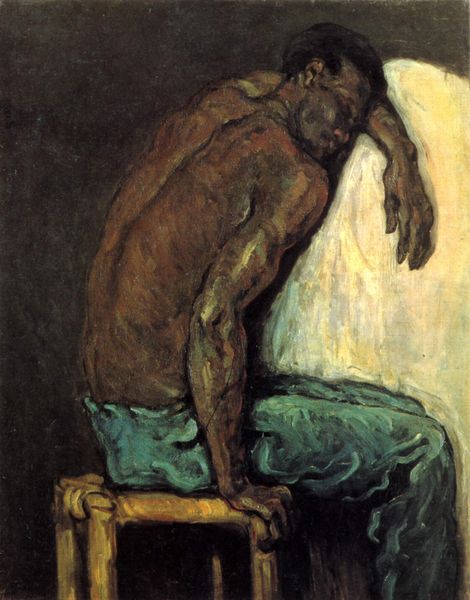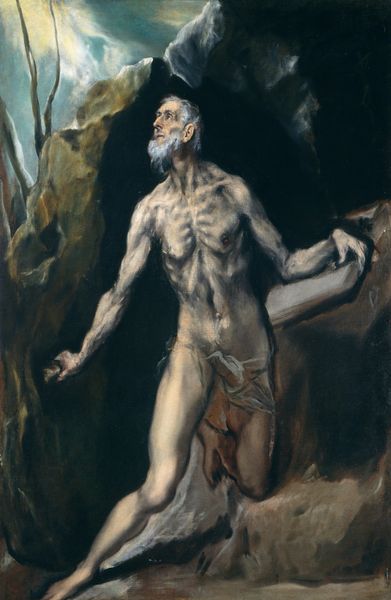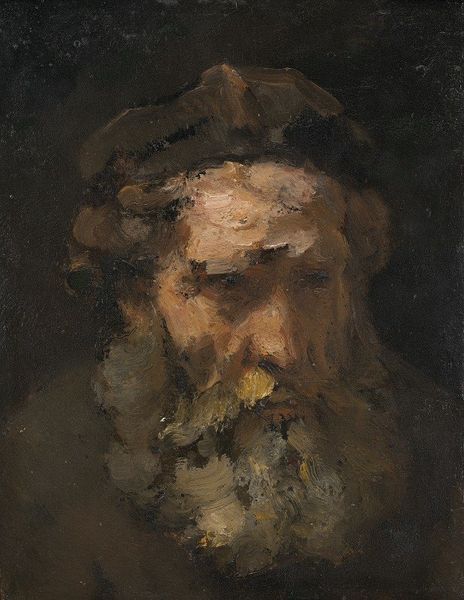
Copyright: Public domain
Curator: Here we have Mariano Fortuny Marsal's "Nude Old Man in the Sun," created in 1873. It resides here in the Museo del Prado. Editor: The first impression I get is one of raw vulnerability. The subject is an elderly man, seemingly caught in a moment of profound introspection, all set against a dark, almost melancholic backdrop. The play of light and shadow across his body really emphasizes the texture and form. Curator: Indeed, it is a rather unidealized portrayal. Consider the period – Academic art held sway, dictating very precise conventions. Fortuny challenges those notions with his candid, if sympathetic, depiction. The nude, particularly the male nude, served complex social functions throughout art history. Here, we seem to have one that goes beyond idealized form. Editor: Absolutely. If we look closely at the brushwork, the application of oil paint appears quite gestural, almost unfinished in places. Note how Fortuny captures the sagging skin, the prominent bones – elements not typically celebrated in traditional nudes. What statement is he making with such visible and expressive paint handling? Curator: It’s certainly a divergence from the smoothly finished academic style. The art world in Spain, at that time, was under intense debate between embracing modern movements and clinging to the old guard. By emphasizing realism – even unflattering aspects of realism – Fortuny may be subtly siding with the growing Realist movement, influencing younger Spanish artists. Editor: The man's face, especially his closed eyes, brings out an emotive impact, almost tragic, enhanced by the light specifically illuminating his face and upper body, suggesting a fleeting, intimate encounter. Curator: The fact that Fortuny never exhibited this in his lifetime, adds another layer of context. Was he challenging convention but not yet willing to put it up for societal critique? This allows for discussions on privacy, the creative process, and the public’s gaze. Editor: The use of light—its dramatic fall and highlights—creates form and also amplifies our experience of empathy. We are given insight into an inner world of emotion and perception. It causes me to contemplate about mortality, about the passage of time—which makes this a deeply moving composition. Curator: Reflecting upon Fortuny's career trajectory allows for speculation—what future themes or innovations might have stemmed from this canvas if the artist had lived longer. Editor: It certainly pushes us to reflect on the artist's place within art historical categories, and how their aesthetic and impact lingers long beyond their creation.
Comments
No comments
Be the first to comment and join the conversation on the ultimate creative platform.
